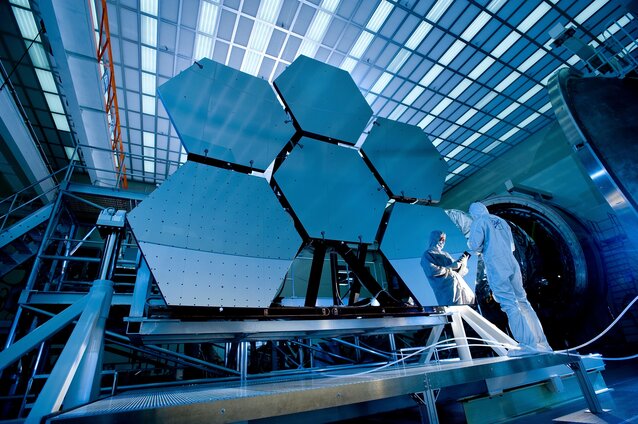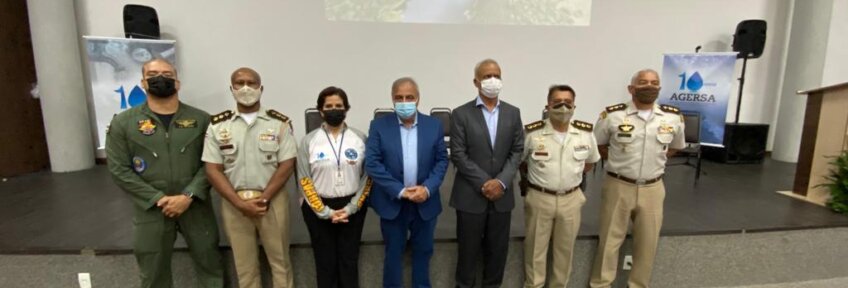The Sanitation Regulatory Agency of the State of Bahia (Agência Reguladora de Saneamento do Estado da Bahia - AGERSA) is responsible for overseeing the provision of public basic sanitation services in 366 municipalities. With the aim of keeping the team safe, optimizing the inspection action, making the inspection time more cost effective, as well as making the diagnoses more complete, the use of drones was incorporated in the field inspections. Using Drones enhances the safety of the technical inspection team, allows for more complete diagnoses and assessment reports, and contributes to time optimization, thus allowing for quality, efficiency, safety and cost reduction gains.
Innovation Summary
Innovation Overview
AGERSA maintains within its attributions the performance of on-site inspections of sanitation structures and all their components. Among the components to be inspected are equipment that was difficult to access and with a notorious risk to the physical integrity of the technical inspection team such as: elevated reservoirs that require training and the use of safety equipment to access them, which sometimes is not enough due to the poor physical state of the structures (stairs, rest platforms and guardrails), water abstractions, sewage disposal points, which are often located in dense forest areas that make access difficult and present a risk of accidents with venomous animals. The difficult-to-access places have also jeopardized the conservation of the official car used in the inspections, which has also caused technicians to have to disembark and walk long distances, impacting inspection time.
The innovation consists in using Drones (Unmanned Aerial Vehicle - UAV), remotely controlled aircraft, in inspection actions. The objective of the innovation is to bring security to inspections, allow for the production of reports with complete diagnoses and contribute to time optimization, thus allowing for gains in terms of quality, efficiency, safety and cost reduction. This in turn benefits the Technical Team, in terms of reducing the risks they face, and users (consumers of information) of water treatment and sanitary sewage services.
Innovation Description
What Makes Your Project Innovative?
Implementing the use of Drones (Unmanned Aerial Vehicle - UAV) made it possible to obtain images during inspections, something that before the use of this technology would have been impossible to acquire in the inspection act. Their use now provides more detailed and assertive knowledge of all the structures of the system water supply and sewage system. Without bringing risks to the technical team and making the inspection activity more efficient. This implementation was made possible by the course provided by GRAER PM-BA, where both in theoretical classes and in field classes, it showed how to handle the DRONE, meeting all the specifications of the relevant legislation, thus bringing safety to the flights carried out by the technicians.
What is the current status of your innovation?
The technical team already uses drones in inspections, where it has already shown results, in the future the increase in the number of Drones all inspections will be able to enjoy the advantages of this technology.
Innovation Development
Collaborations & Partnerships
The Bahia Military Police Air Group (Grupamento Aéreo da Polícia Militar da Bahia) CORPAS (Remotely Piloted Aircraft System Operator Course), was a partner responsible for a 120 hours team training that lasted 4 weeks during the period between January 2020 and February 2022. It involved a distance theoretical phase, practical flight classes and assessment to verify proficiency. And during the last week, the course included a psychological assessment with a psychologist specializing in human factors in aviation.
Users, Stakeholders & Beneficiaries
The technical inspection team, in addition to being an interested party, is also the user of the innovation, as with the innovation it was possible to substantially increase the number of municipalities and systems inspected. In addition, it eased the countless difficulties mapped by the technical team for the field work, most of which could be eliminated with the use of drones. Gains in terms of quality, efficiency, safety and cost reduction also benefit citizens, who receive a service with greater quality with the use of drones.
Innovation Reflections
Results, Outcomes & Impacts
As the objective of innovation is to use drones, the first goal was to qualify the technical team, and through the course offered by GRAER, the goal was successfully completed, obtaining 100% of the team qualified. The use of this technology brought another question to the systematized use of drones: the production of the User's Manual. This goal was successfully achieved, which made it possible to reach the main result of performing 32 inspection flights and obtain efficiency in the activity time without risks to the technician.
Challenges and Failures
The bureaucracy and slowness of the flow for the acquisition of equipment posed a challenge, as it delayed the maximum reach of the advantages of the innovation. Avoiding the previous would be important so that technicians do not need to take turns using the equipment while the purchase process is in progress. Another challenge is the difficulty of finding professionals who carry out preventive and corrective maintenance of the equipment, a market that is still little explored. To overcome them, an attempt was made to study the regulations and laws involving the use of the equipment, presenting the directorates responsible for successful cases in different areas, interconnecting them with the activities of regulation and training the team who would use them.
Conditions for Success
The engagement of those involved, including partners such as GRAER and PM – BA and the practicality of using the equipment was a necessary condition for the success of this policy. The willingness of the technical team to put into practice all the acquired knowledge is a must.
Replication
The innovation has not been replicated, although the service provider has taken steps to reshape its practice.
Lessons Learned
AGERSA is responsible for carrying out on-site inspections of sanitation structures and all their components. Among the components to be inspected were equipment that was difficult to access and that put the physical integrity of the team at risk. Issues involving safety, physical exhaustion and time added to the incompleteness generated in the diagnoses and presented in the inspection reports as an “unverified area”, preventing the technical team from determining the corrections and follow-ups necessary for these segments to be improved. After the implementation of the innovation, we learned that the decision to invest in the safety of the team, to optimize and make the inspection time more profitable, as well as to make the diagnoses complete, was a good decision.
Supporting Videos
Status:
- Implementation - making the innovation happen
Date Published:
4 August 2023


